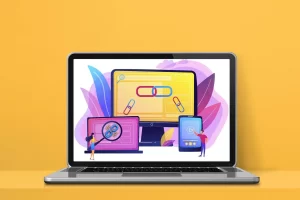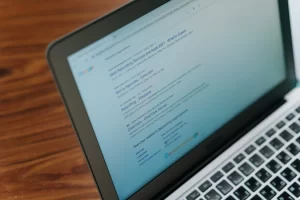You might not be familiar with landing pages if you’re new to online marketing. And why would you even require them? But the key component of any online marketing plan is landing pages. Both big and small businesses utilise them.
A landing page is an independent web page on which visitors can “land” after clicking through from an email, advertisement, or other digital sources. In exchange for something useful, such as a retail discount code or business-to-business (B2B) insights in the form of a white paper, it seeks to gather users’ contact information.
In contrast to other web pages, landing pages don’t belong in a website’s evergreen navigation. They provide a specific function for a target audience at a specific time during an advertising campaign. A landing page aims to convert visitors, making it a crucial tool for all marketing initiatives.
You want your landing pages to be effective conversion tools, of course. However, optimising them for search engines is also crucial, a process known as search engine design (SEO). Your pages will become more noticeable in organic search results, which may boost traffic and conversion rates.
In order to improve your landing pages’ SEO and conversion rates, use these 14 best practices:
1.Target Long-Tail Keywords
These specific keywords or phrases typically have four or more words. In contrast to the shorter keyword “landing pages,” the phrase “best copywriting ideas for landing pages” is an example of a long-tail key phrase.
Long-tail keywords typically have lower levels of competition than short-tail keywords, making it considerably simpler to rank for long-tail keywords. Additionally, since landing pages have very targeted CTAs, it is easy to seamlessly incorporate long-tail keywords into their content.
2. Segment Your Traffic
Your target audience probably consists of several personas. For instance, if you sell reusable water bottles, you should market them to various consumers, such as hikers, vacationers, and athletes. Because of their differences, you’ll need different strategies to appeal to these diverse customer personas.
Consider designing unique landing pages for each audience category. Finding the keywords each persona would use to find what you’re offering will be necessary. By segmenting your audience, you can increase your website’s visibility in search results and create a more relevant message to each group’s needs.
3. Optimise Page Loading Speed
When so many other businesses are vying for a potential customer’s attention, it can be challenging to keep them. Users are easily distracted and impatient. Therefore if your landing page loads slowly, your chances of getting them to convert decrease.
Landing pages must load fast to maintain a high conversion rate. Fortunately, you can easily optimise them because they only serve one function. Reducing image sizes is one of the many ways you can speed up your page’s loading time.
4. Build Backlinks
Backlinks are links that lead to your website from other websites. They effectively serve as votes of confidence in the eyes of search engines by sending traffic to your landing pages. Backlinks demonstrate the value of the content on your page when they originate from reputable, high-authority websites. As a result, your website will rank higher on search engine results pages.
To increase backlinks, consider reaching out to other websites for guest posting opportunities. However, be wary of any site that requests payment because Google disapproves of link-building tactics of this kind.
5. Create a Shareable Content
That entails giving it a distinctive or innovative element. Remember that each of your potential leads has connections to other people who might be interested in what you offer. You can access these bigger networks if people share your landing pages. This extra traffic will improve your page’s search engine rankings in addition to bringing additional leads to it.
6. Come Up with an Enticing Headline
Attract users with an attention-grabbing headline. Combine your intriguing title with powerful copywriting to keep users on the page long enough to convert. You can bring attention to the page with specific keywords like “free” or “now.”
7. Position Your Headlines, Main Messages and CTAs Above the Fold
In the past, newspapers used a notion called “above the fold”, in which the most significant headlines and news were printed on the top half of the first page. In digital marketing, this is the screen portion visible to the user without having to scroll down.
A user is likely to scan the landing page in its entirety before scrolling down to learn more. To increase the likelihood of a conversion, keep the headlines, the main message, and the call-to-action (CTA) above the fold. The title must be precise, short, and contain the main keywords to be effective for SEO.
8. Guide Users to Your CTA Using Directional Cues
Arrows or an image of someone staring at your CTA are suitable examples of using directional cues to guide users to your CTA. This is particularly crucial if your CTA is below the fold. Strategically positioned cues inspire visitors to scroll, read more, and take action.
9. Include a Video or Product Demo
A video or product demo might give context if your product is unusual or not well known. This information will make it easier for prospective buyers to imagine utilising your product or service.
10. Provide Social Proof
Do you have reviews from satisfied clients? If so, mention them in the copy on your landing page. You can also track how many people have already taken advantage of your offer if your product or service is popular. By demonstrating social proof, you can persuade people to join the bandwagon and test your product or service for themselves.
11. Utilise Bullet Points
Use numbered lists or bullet points to list the features and benefits of your giving since there are probably more than one. This is more reader-friendly because it is easy on the eyes and easier to scan than a massive block of text.
12. Don’t Forget Your Contact Info
Even the leads who won’t actually contact you will feel more comfortable knowing they have the choice to do so. Why? Giving customers your contact information is a sign of credibility because it lets them know you’re available to assist them if needed.
13. Use Video Content
Because not everyone will read the copy on your landing page, video content is becoming increasingly popular these days. However, this does not imply that there should be no text on your website. Text and video content can work together to draw in and retain users’ attention. It’s also advisable to always include subtitles because many users don’t enable their sound.
14. Conduct A/B Tests
Different headlines, images, calls to action, and other elements can result in various outcomes. To find the most effective variations of your landing pages, do A/B tests on each one. This helps you optimise your landing pages for maximum effectiveness.
When and How to Use Landing Pages?
Marketers use a variety of strategies to direct visitors from other websites to landing pages. The intent and type of landing page are determined by the tactics used, such as:
Pay-Per-Click Advertising
Pay-per-click (PPC) advertising charges you each time a user clicks on your ad. PPC advertisements are frequently seen on search engines like Google and Bing. But you can also use them on linked websites, Facebook, Twitter, or other social media platforms. You need optimised landing pages if your company or brand spends money on PPC advertising.
Why? Because you wouldn’t send clicks to your homepage if you were running a PPC ad campaign for your newest product. Instead, you would create a single page (called a landing page) that would persuade visitors to purchase your new product right away.
Social Media Marketing
Online marketing strategies prioritising gaining natural popularity on social media can also include landing pages. An excellent illustration would be the promotion of an e-book for lead generation. You can direct users to a landing page where they can enter their information in exchange for exclusive content from an organic social media post.
Additionally, you may utilise landing pages to collect information and RSVPs for events, signups for email newsletters, coupons, promotions, and giveaways.
Content Marketing
Content marketing aims to create and distribute valuable, timely, and consistent content to draw in and retain the attention of a target audience and, ultimately, to encourage valuable customer action. In light of this concept, you can use landing pages to introduce content to a target market, grab their interest, and persuade them to convert later.
For instance, your brand could build a library of helpful information as part of a bigger content marketing strategy. It makes sense that you want your audience to use these resources. You can demand that visitors fill out a landing page form with their email addresses to access your special content.
Email Marketing
Once you’ve acquired a visitor’s email address, you can use email marketing to give them pertinent information, offers, and content. Additionally, landing pages are an effective tool for this messaging. Use a landing page if you’re delivering your subscribers a special deal!
Optimise Your Landing Pages with TopRankings
A landing page is useless if your target audience doesn’t see it. With the help of TopRankings, we can ensure you get the right eyes on your landing page and increase your lead generation and conversion. We are an SEO agency in Melbourne with 20+ years of experience helping brands generate exciting and sustainable ROI using effective SEO strategies.
With the help of our proven and continuous partnership with a leading web design agency in Melbourne, Digital Rescue, we can guarantee a landing page that does its purpose effectively. Get an obligation-free chemistry call – reach out today!



